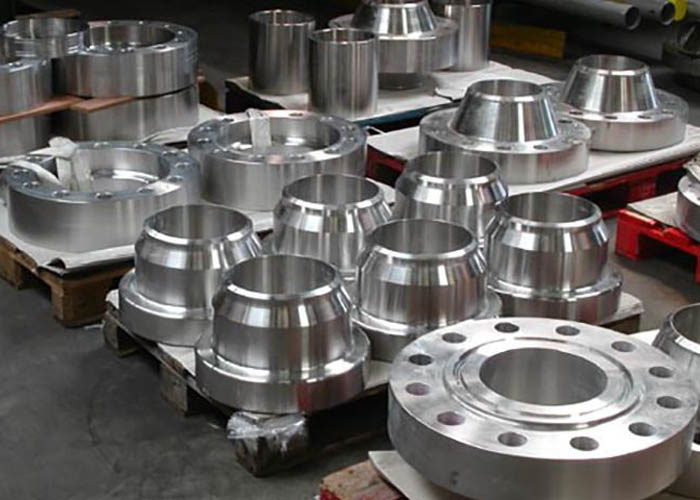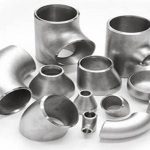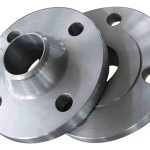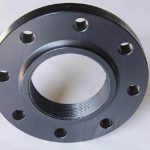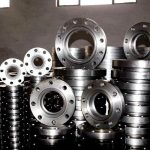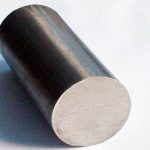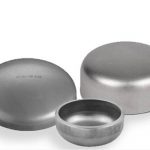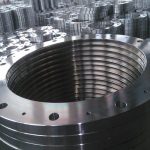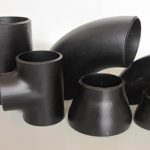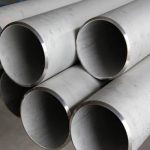Brida no estándar
Non-standard flanges will only be used in cases where pressure, temperature and size requirements exceed the capabilities of standard flanges. Keep in mind that non-standard flanges require calculation, design and special manufacturing procedures, which is why they are chosen only as a last resort. The most common such applications are large equipment flanges and heat exchangers body flanges.
Non-standard flanges are designed and calculated according to ASME VIII Div.1 Appendix 2 and Appendix S, and according to ASME VIII Div.2 part 4.16.
Design criteria
Rules for the design of bolted flange connections as described in Div.1 Appendix 2 apply to flanges with gaskets placed entirely within the circle enclosed by the bolt holes and with no contact outside this circle.
This method is applicable to circular flanges under internal pressure and takes into account only hydrostatic end loads and gasket seating loads. Rules have been further modified so that they can be applied to the design of flanges under external pressure, reverse flanges and flanges with nut stops.
Design procedure for large diameter, low pressure flanges shall be supplemented by methods other than the code e.g.: check flange rotation. Flanges greater than 60 inches (1524 millimeters) inside diameter and designed for up to 100 psig (689 KPa) pressure fall under this category.
Talla
Brida no estándar: 1/4 ″ -160 ″
DN8-DN4000
MATERIAL:
Acero al carbono: ASTM A105, ASTM A105N, GB 20, C22.8.
Acero de aleación: ASTM / ASME A182 F1-F12-F11-F22- F5-F9- F91
Acero inoxidable: ASTM / ASME A182 F304-304L-304H-304LN-304N
ASTM / ASME A182 F316-316L-316H-316LN-316N-316Ti
ASTM / ASME A182 F321-321H, F347-347H
Acero para baja temperatura: ASTM / ASME A350 LF2.
Acero de alto rendimiento: ASTM / ASME A694 F42, F52, F56, F60, F65, F70
Tipo de brida
Serie América: cara plana (FF), cara elevada (RF), lengüeta (T), ranura (G), hembra (F), macho (M), cara de juntas tipo anillo (RJ / RTJ)
Serie Europa: Tipo A (Cara plana), Tipo B (Cara elevada), Tipo C (Lengüeta), Tipo D (Ranura), Tipo E (Espiga), Tipo F (Receso), Tipo G (Espiga de junta tórica), Tipo H (ranura para junta tórica)
Presión
Serie América: Clase 150, Clase 300, Clase 600, Clase 900A, Clase 1500, Clase 2500.
Serie Europa: PN2.5, PN6, PN10, PN16, PN25, PN40, PN63, PN100, PN160, PN250, PN320, PN400.
ESTÁNDAR
Nuestra brida no estándar se puede producir según el estándar común y realizar algunas enmiendas de acuerdo con los requisitos de nuestros clientes.
ASME ANSI B16.5, ASME ANSI B16.47.
API 605, API 6L.
MSS SP 44
CSA Z245.12
EN1092-1, EN1759-1.
DIN2630, DIN2631, DIN2632, DIN2633, DIN2634, DIN2635, DIN2636, DIN2637, DIN2638.
BS1560, BS 4504, BS 10.
AFNOR NF E29-200-1
ISO7005-1
AS2129
JIS B2220
UNI 2276. UNI 2277.UNI 2278 .UNI 6089 .UNI 6090
Procesos industriales
Matriz de forja, mecanizado.
Aplicación para brida no estándar
Gas natural, químico, petróleo, construcción naval, marina, fabricación de papel, metalurgia, electricidad, energía, calderas, etc.
